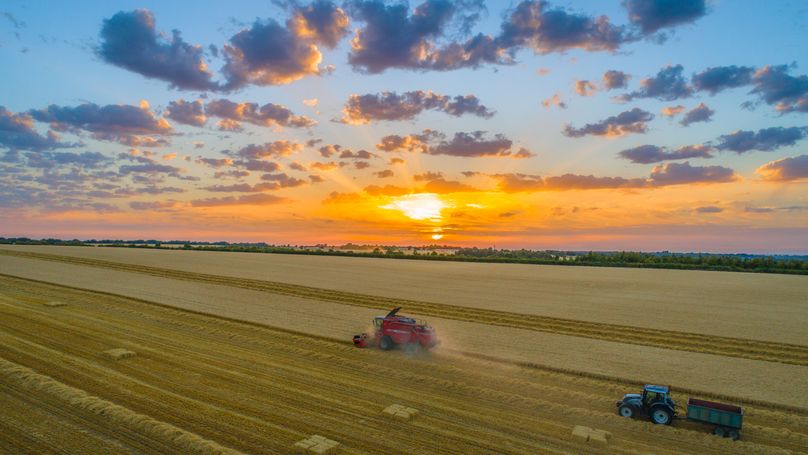The rural sector has traditionally been a counter cyclical asset class, performing well when others have faltered during times of economic uncertainty. It has not only weathered some of the most severe economic downturns in history but has done so whilst providing excellent financial performance, most recently following the 2007/08 global financial crisis.
In times of economic uncertainty, private, institutional and corporate investors have been attracted to the rural sector due to its relative safety, transparency and potential for capital growth. This has led to the sector being considered a relative safe haven, on par with gold and precious metals. For the private investor, rural land and property can also provide tax efficiencies, lifestyle and recreational benefits.
What remains true of land today, as in previous years, is that they aren’t making any more of it. In recent times, scarcity of supply and historically low costs of borrowing have sustained land values and competition remains strong in most regions of the UK.
It remains to be seen whether rural land values will enjoy the same levels of exceptional capital growth that they have over the last 30 years, however the market fundamentals remain robust and the long term outlook is positive for agricultural land.
However, increasing land values are not the only reason for the sector’s strong performance and resilience.
A large proportion of the strong counter cyclical performance is attributable to the diversity of the sector and the income that can be generated from it - whether through development, forestry, renewables or commercial property.
The rural sector has the potential to deliver a number of these objectives, whilst generating returns for landowners from new and alternative land use.
As part of the recovery from COVID-19 the sector is now, more than ever, in the spotlight from all corners of society to deliver economic, environmental and social objectives.
The UK Government has recently adopted the mantra to “build back better, build back greener” with additional support for housing and infrastructure projects, whilst promoting a green, clean recovery.
The rural sector has the potential to deliver a number of these objectives, whilst generating returns for landowners from new and alternative land use. However, Rural – land of opportunity and resilience a sustainable long term strategy is key.
‘Build back better’, alongside reforms to the planning system, provides the opportunity for landowners to promote, or work alongside developers, to deliver land for valuable residential, commercial and employment uses.
The approach has also been echoed by the Scottish Federation of Housing Associations (SFHA), who believe that the delivery of 53,000 affordable homes between 2021 and 2026 “can build recovery from the pandemic”, generating 200,000 jobs, boosting the economy by £2 billion whilst raising £100m in tax revenue.
New infrastructure projects, such as improvements to the road, rail and broadband networks, also have the potential to open up rural areas, reducing travel times whilst increasing desirability and consequently value. Alongside possible reforms to the planning system, this illustrates how landowners can aid the economic recovery whilst generating potentially significant returns.
An increasing requirement to demonstrate biodiversity net gain for new developments could also provide opportunities for rural land owners. Biodiversity net gain is where the impact of a development on biodiversity is assessed and any loss is mitigated or offset through on site or offsite measures. Whilst this is an additional cost which must be taken into account by a developer, offsite measures have the potential to provide an alternative income stream for landowners.
As well as providing land for residential development and infrastructure projects, we should not forget about what lies beneath the surface. Minerals, and more specifically those required to construct the developments and infrastructure projects envisaged by the Scottish and UK Governments. By promoting potential mineral sites, and working alongside operators, the rural sector is once again supporting government targets whilst providing returns for landowners.
A key element of a well-diversified rural estate is residential property. Following the easing of lockdown restrictions and the requirement to work from home, Galbraith has witnessed a noticeable shift in tenant demands, with a greater emphasis on gardens and outside space as well as home offices.
Initially, the holiday letting market was adversely affected by lockdown measures, however an increase in staycations has seen many holiday lets booked out until the end of the summer season. The market is currently buoyant, and is providing a valuable income stream for many private and rural estate owners.
The residential sales market has also been reinvigorated post lockdown, with an increase in enquiries for countryside properties. Following the announcement of the SDLT and LBTT holidays enquiries for countryside properties have increased, with purchasers keen to take advantage of what is a significant cost saving. In many cases, we are seeing properties sell significantly in excess of asking price.
Whilst the COVID-19 pandemic has been the principal concern in recent months, we cannot overlook Brexit and the challenges it poses to the rural sector. The UK’s withdrawal from the European Union (EU) has presented unprecedented challenges to the rural sector, not least subsidy reform following the exit from the Common Agricultural Policy (CAP).
However, alongside the challenges sit opportunities; with an ever increasing shift towards Natural Capital and the concept of Public Money for Public Goods in England. Whilst the Scottish Government currently favours a more direct replacement to the existing subsidy regime, both concepts will undoubtedly result in a change in management practices.
As a signatory to the Paris Agreement, the UK, along with a number of countries across the world, has committed to reduce its carbon emissions to net zero by 2050. The Scottish Government has gone one step further and has committed to net-zero by 2045.
Governments and companies are therefore rapidly turning their attention to how they can reduce their carbon emissions. In some instances in advance of the deadlines set by the Scottish and UK Governments. Many organisations also have ambitions to become net sequesters of carbon and see this as a potentially lucrative and valuable income stream.
There is a clear opportunity for the rural sector, with household names committing significant capital to acquiring land for carbon sequestration purposes. Yet there is still some way to go for the accreditation and trading of UK schemes to develop, and there are a number of competing accreditations across the world, which adds complexity to the market.
For landowners, it has the potential to provide a valuable income stream from land with limited agricultural productivity, whilst also complementing existing commercial investments such as forestry.
Renewable energy also has a role to play in the reduction of carbon emissions and the delivery of a green economy. With the cost of renewable infrastructure now at a point where onshore wind, solar and hydro can be a viable subsidy free opportunity, it remains a key component of the diversified income stream of the rural sector. Additionally, the change in focus towards offshore wind can still provide windfall receipts and additional revenue streams for landowners whilst delivering sustainable green objectives. The move towards electric vehicles, and the infrastructure that goes into supporting them, will also be an interesting development for the sector.
The rural sector has undeniably been affected by the COVID-19 pandemic, however when compared with other asset classes, it has been relatively resilient. There are certainly challenges on the horizon, however the rural sector is well placed to meet them and there is significant potential upside for rural land and property owners.
The robust fundamentals which have historically made the rural sector an attractive investment in times of difficulty are likely to prevail. The only difference is that on this occasion, the diversity and breadth of opportunities which have provided resilience and attractive returns in the long run, are more abundant than ever.

